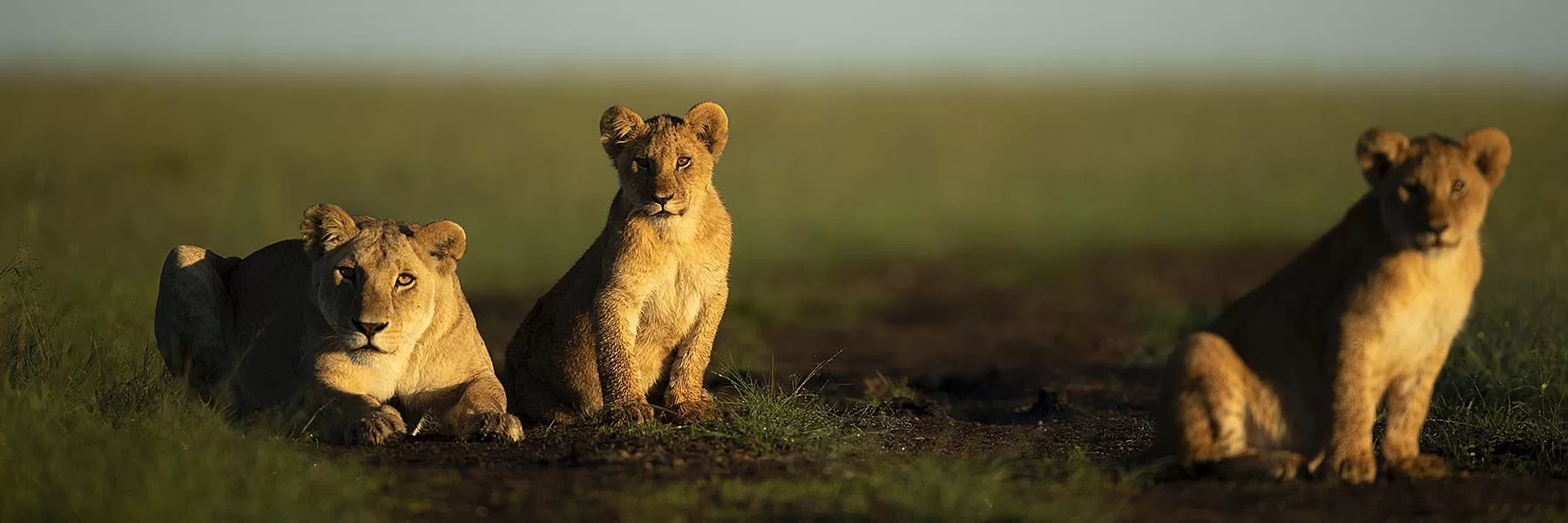Lions, the most recognisable animals on the African continent, are revered for their powerful and courageous traits, earning them the title ‘king of the jungle’. Beyond their symbolic representation of strength, lions also boast some amazing facts. These majestic and intimidating creatures, often associated with safaris, are primarily found in the wilds of Africa . However, it’s fascinating to note that a small population of these incredible animals resides in the Gir Forest National Park in western India. Exploring the amazing facts about lions adds an extra layer of appreciation for these awe-inspiring creatures when encountered on a safari.
The lions found in west and central Africa are more closely related to the Asiatic lions than those found in southern and east Africa.
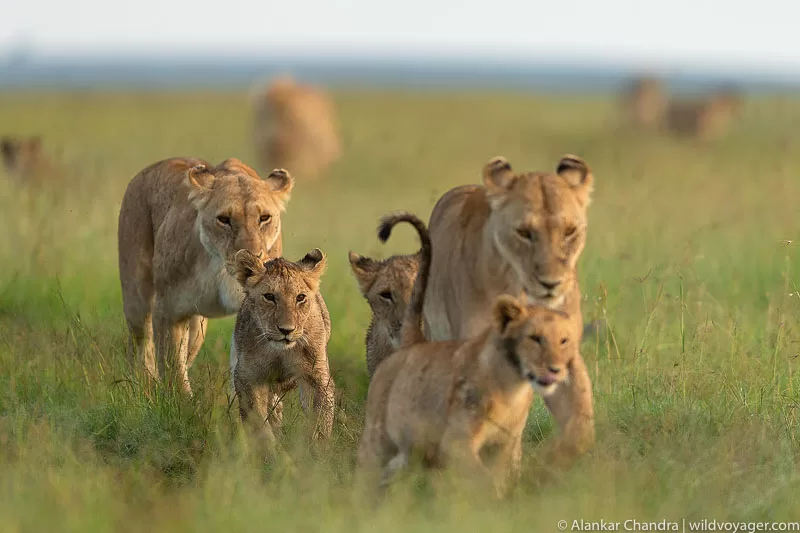
pride of lions
Learn fascinating details about lions through these amazing facts about the majestic creatures:
1. Lions are social animals
Lions are the most social of all the big cat species. They are the only cats who prefer to live in groups known as pride. Pride is similar to family units that may comprise 2 to 40 lions living together. It includes three or four male lions, dozens of lionesses, and their younger cubs.
Male lions are fierce and defend their pride territory amazingly by marking the area. They roar to frighten the intruders and chase off the animals who enter their turf.
Some male lions who don’t choose pride remain nomads for the rest of their lives. These males rarely reproduce since most of the female lionesses are protected from outsiders by the group’s members. Lions spend a good amount of time sleeping and idling off, while male lions patrol and guard the group against intruders.
Male lions have a shorter life expectancy than females, and thus, their tenure within a pride only lasts for a short time. They are in their prime from about the ages of 5 to 10, and once the lions aren’t capable of fathering cubs, they are usually expelled from the group.
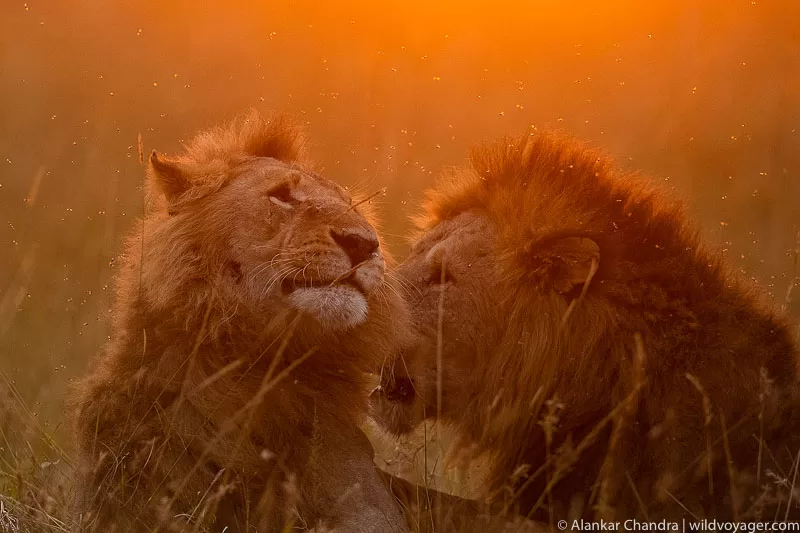
Males rarely remain part of the pride for more than 3 to 5 years. A pride that has an older male is ripe, and the young and strong male lions often take care of them.
In pride, the female forms the core of the group. Cubs, which are born in pride, are taken care of collectively by the female lioness. They live in pride from birth until their death, although they are occasionally expelled. As a result, the females in pride are related to one another.
Therefore, a pride of lions is considered to follow a matriarchal social structure.
2. Hunting Behaviour and Styles
Lions are not the fastest runners, as they have small hearts and lungs. Due to their lack of stamina, their maximum speed is 60 mph. Yet they are regarded as excellent hunters due to their predatory behavior and strength.
Along with stalking, lions also indulge in ambushing their prey. This behaviour is typically observed in the daylight, as stalking is difficult during that period.
It is the lioness who performs the majority of the hunting and provides food for the entire pride, while the male lions tag along. The reason lies in the agility and smaller size of the lioness, which make them excellent hunters as compared to males.
Hunting tactic
The female lions of pride make use of teamwork to bring down their prey. It is suggested that lions often follow the same hunting patterns and divide roles among the members; left, centre, and right-wing positions.
Once they are within the reach of small prey, they use their paws to slap the rear of the animal’s leg or knock off its balance. Usually, a bite to the neck or throat kills the animal quickly.
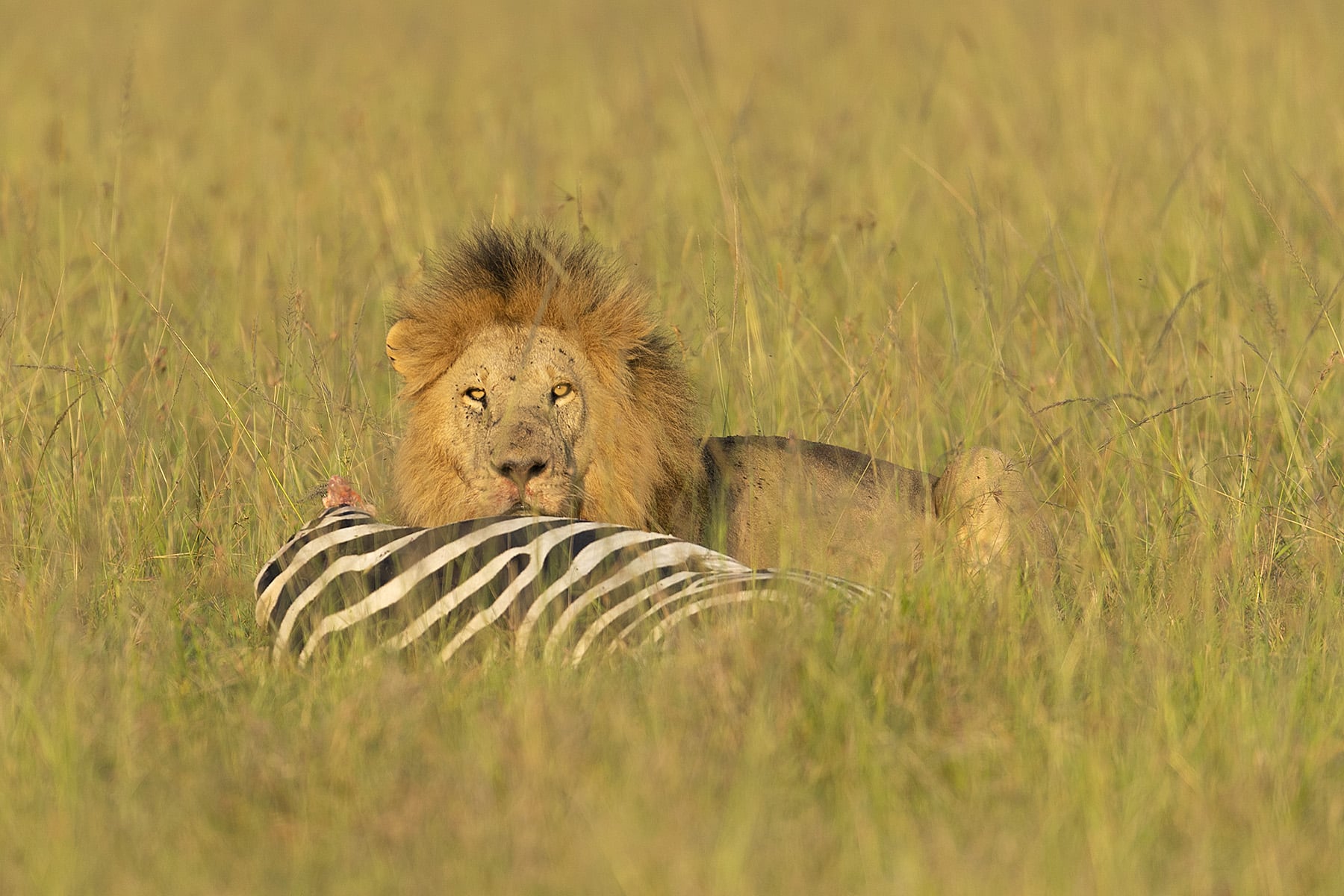
With larger prey, the lions approach the animal at an angle where they jump on top and use their weight to wrestle the animal to the ground. Lions also bite at the prey’s vertebrae in an attempt to sever the spinal cord.
Once the prey is down, lions proceed to bite the nose or throat of the animal to suffocate it. They do this in a position that keeps them away from the prey’s horns. After a successful hunt, all members of the group share the meal. However, a pecking order occurs where adult males eat first, followed by a lioness, and then the cubs.
Night vision
Lions have incredible night vision, which is six times more sensitive to light than humans. Thus, they gain the advantage of hunting animals at night.
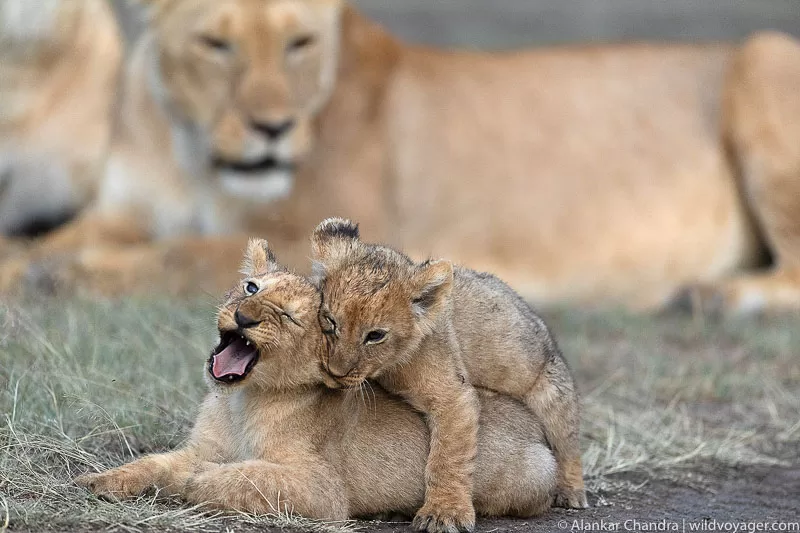
What they prefer
Lions are carnivores and hence their meals consist of herbivore animals like zebras, wildebeests, and buffalos, as well as other smaller animals like birds, mice, hares, and tortoises.
An adult female lion eats about 11 pounds of meat every day, whereas males prefer more than 16 pounds of meat on average. While eating is very important to lions, they can go without drinking water for four days.
3. Mating behavior
Although male lions are kings, it is the female who decides when, where, and how the mating will take place.
While both sexes breed throughout the year, females are usually restricted to one or two adult male lions from the pride.
Female lions will start mating at the age of 4, while males begin at 5 years of age. The breeding season in lions is not seasonal, but females in pride will often be synchronized in oestrus.
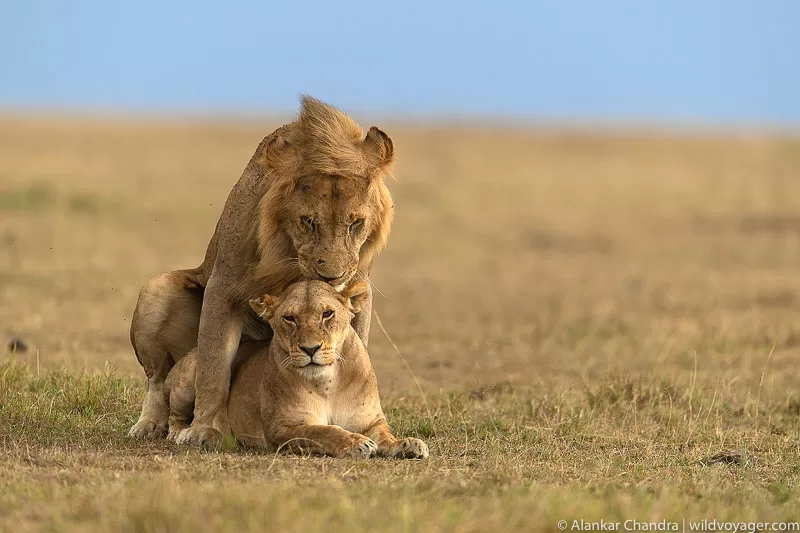
lions mating
There are no fixed criteria for selecting a mating partner, and competition among males living in pride is lower. Instead, the male lion follows the lioness very closely around the first sign of fertility onset.
Other males keep their distance, with the exception of cases where a large male lion may fight with a smaller one.
When the lioness is in heat, she shows her readiness by marking, rubbing on objects, and rolling on the ground. The gestation period is about 108 days, and the litter size of cubs varies from one to six.
4. Raising cubs in a community
Before the cubbing, the female lioness moves away from the pride and gives birth in a well-hidden lair. When they are born, the cubs are very small and have their eyes closed. They don’t open them until they turn two to three weeks old.
A lioness keeps her cubs hidden from other lions and predators until they turn at least six weeks old. If there are older cubs in the pride, the mother waits for three months before introducing them.
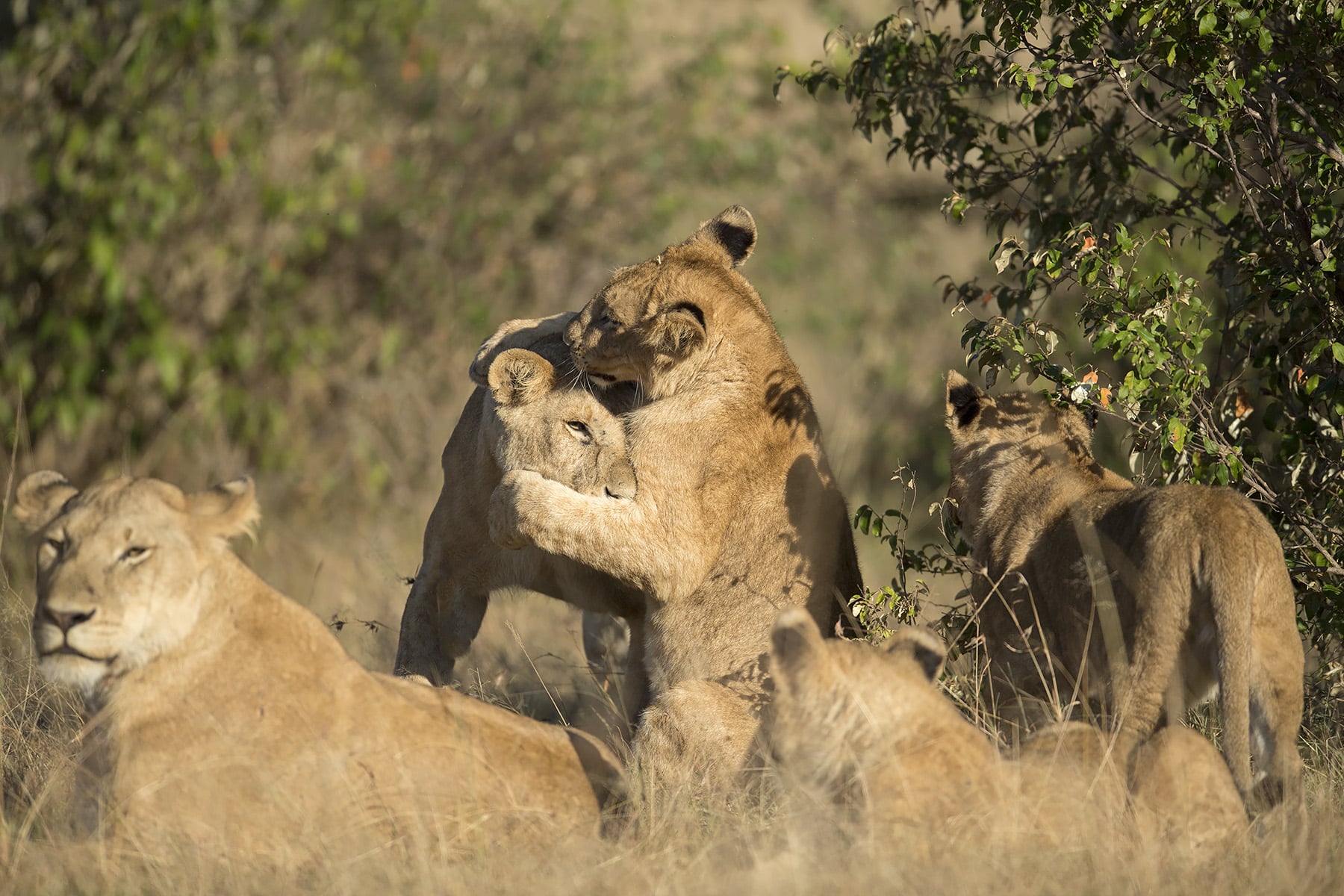
Lioness in pride often have cubs around the same time and look after them in a group referred to as ‘creche’. This keeps the younger ones safe from other predators and larger animals.
The lioness present in the pride cares for one another’s cubs and often allows them to suckle on her even though she isn’t the mother.
After cubs turn two to three months old, they begin to eat meat along with drinking milk. By the time they reach two years of age, the former cub does not need mothers to look after them anymore. When the younger male lion grows up, he typically leaves the group and establishes his pride. The female cubs, on the other hand, stay with the group as they age.
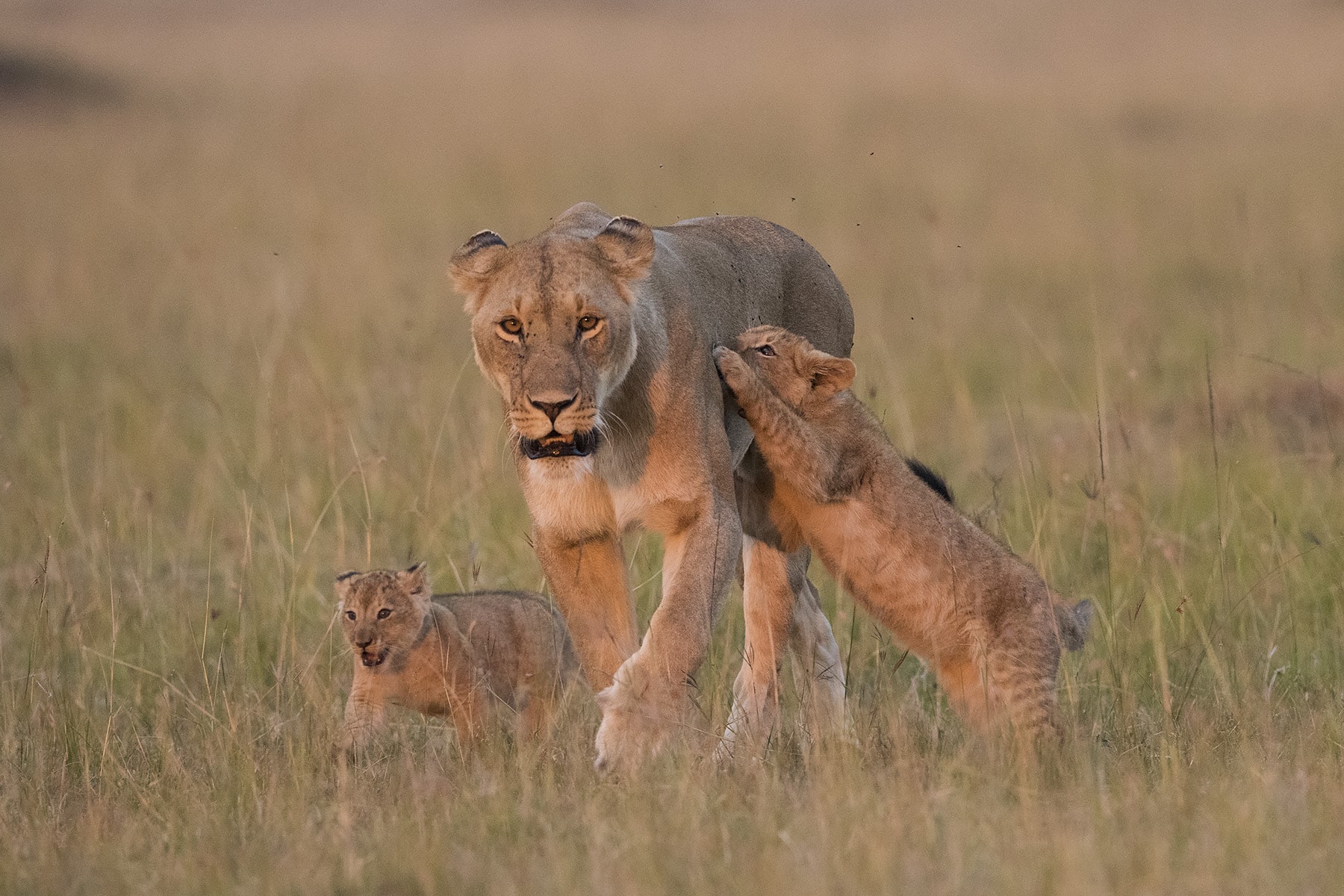
5. The life expectancy of lions
- In the wild
Lions live for a maximum of 12 years of age in the wild. Compared to a male lion, the female lioness lives for much longer.
Due to several factors, such as natural threats, diseases, scarcity of food, and combat between pride, lions cannot live for a long period in the wilderness.
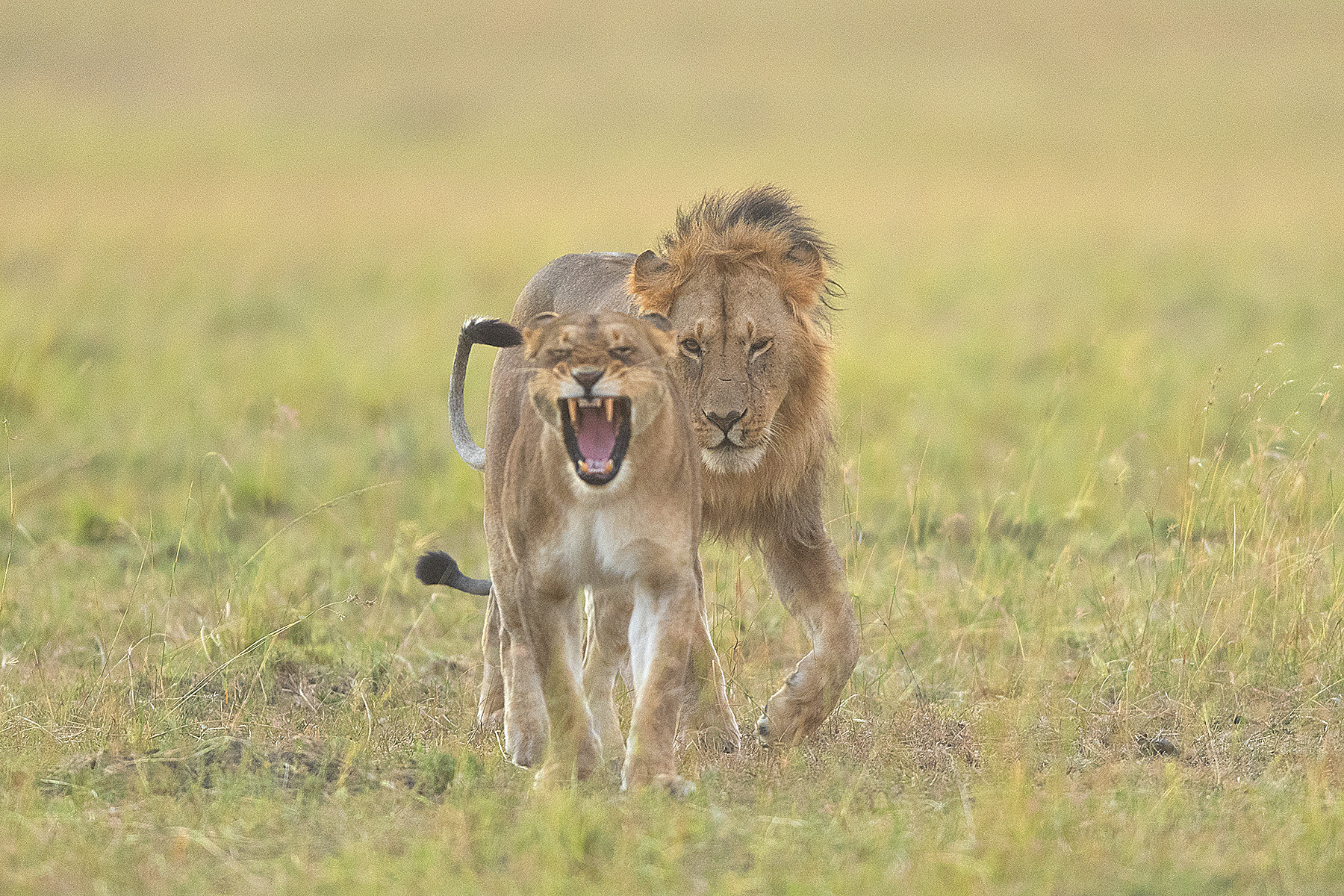
However, one of the biggest problems lions face in the wild is from humans. Hunting and killing of these animals have unfortunately endangered the species.
The reasons for a longer life expectancy in lionesses include living in pride till their death, not engaging in fights, and no threat from male lions. Thus, they can live for 15 to 16 years in the wild.
- In captivity
While in captivity, the life expectancy of lions increases by 20 years. The oldest lion in captivity lived up to 29 years of age!
Due to good care, enough food, and fewer fights, lions live longer in captivity. They receive the perfect nutrients that fulfill all of their dietary requirements.
Lions are an interesting species and rank at the top of the animal kingdom. Sadly, the population of lions is in decline, and it is classified as “vulnerable.”.
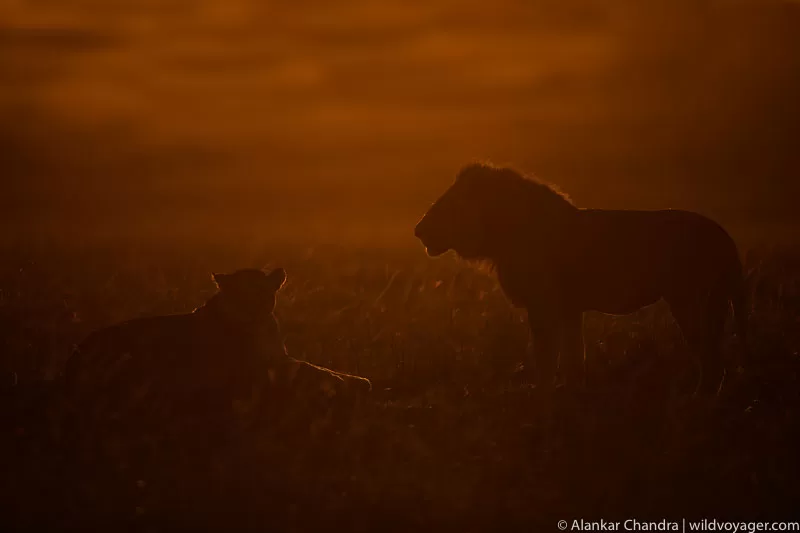
romance of lions
As a tourist, you can make a meaningful impact on the conservation of endangered lions by visiting national parks and reserves.
Explore the stunning landscapes, all while discovering amazing facts about lions. Your contribution to local tourism not only enhances your travel experience but also supports vital conservation efforts for these majestic creatures.
If you loved reading this story, then subscribe to our blog here (it will ask to verify your email) to get inspiring travel stories and trivia delivered to your email. Stories about wildlife trivia, cultural experiences, curated luxury hotel lists, underrated places to travel, polar journeys and much more.


